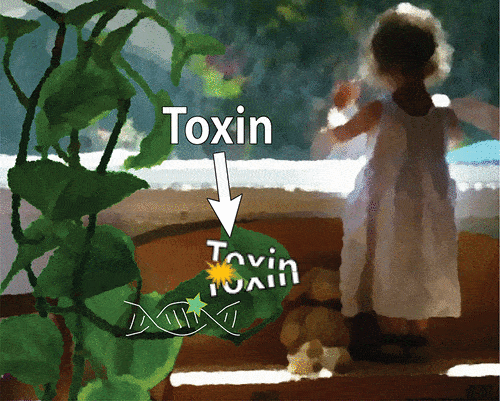We all want to breathe cleaner air. While most urban environments are littered with all sorts of industrial and vehicle pollutants, there are ways to purify the air inside homes. Some air condition their living or office space using expensive filters, for instance. Yet, one of the best ways to keep the air inside your home fresh is to grow certain plants that have air purifying properties. Now, scientists at the University of Washington have genetically modified a common houseplant to remove chloroform and benzene from the atmosphere by introducing a rabbit gene.
Faster air cleanup… with the help of some rabbit genes
All mammals, including humans, express a protein called cytochrome P450 2E1, or 2E1 for short. Once they enter the body, this protein turns benzene into a chemical called phenol and chloroform into carbon dioxide and chloride ions. But there’s a catch — this process occurs in the liver and is only activated when we drink alcohol.
“We decided we should have this reaction occur outside of the body in a plant, an example of the ‘green liver’ concept,” said Dr. Stuart Strand, Ph.D., a research professor in the UW’s civil and environmental engineering department. “And 2E1 can be beneficial for the plant, too. Plants use carbon dioxide and chloride ions to make their food, and they use phenol to help make components of their cell walls.”
Benzene and chloroform can enter our homes from many sources, including cooking, showering, furniture, storing gasoline in a garage, and smoking. Some indoor house plants readily absorb such chemicals, but rather inefficiently. It would take more than 20 potted plants to remove formaldehyde from a typical room, for instance. In order to supercharge air filtering, Strand and colleagues introduced a gene called CYP2E1, which they sourced from rabbits, to a common houseplant, pothos ivy (Epipremnum aureum). This gene is responsible for encoding 2E1, an enzyme that breaks down a wide range of volatile organic compounds found in the home.
In an experiment, the researchers injected benzene and chloroform gas into closed vials that contained the modified plants. Three days later, the concentration of these gases inside the vials dropped dramatically. Eight days later, the chloroform was barely detectable. The concentration of benzene also decreased in the modified plant vials, but more slowly — by day eight, the benzene concentration had dropped by about 75%. For comparison, vials that contained unmodified ivy or no plants at all did not register any changes in concentration.

A common houseplant—pothos ivy— was genetically modified to remove chloroform and benzene from the air around it. Credit: Mark Stone/University of Washington.
The research team estimates that biofilters made of such genetically modified plants could deliver clean air compared to commercial particulate filters. One could argue that the modified plants are actually a lot better since they can catch hazardous compounds that are too small to be trapped in commercial filters.
There is an important caveat to the study’s findings. The researchers note that the ivy was efficient at filtering toxins only when a fan blew air through the leaves. Some potted plants containing the ivy would also remove harmful chemicals but at a far slower rate if there wasn’t any airflow.
The findings appeared in the Environmental Science & Technology journal.










